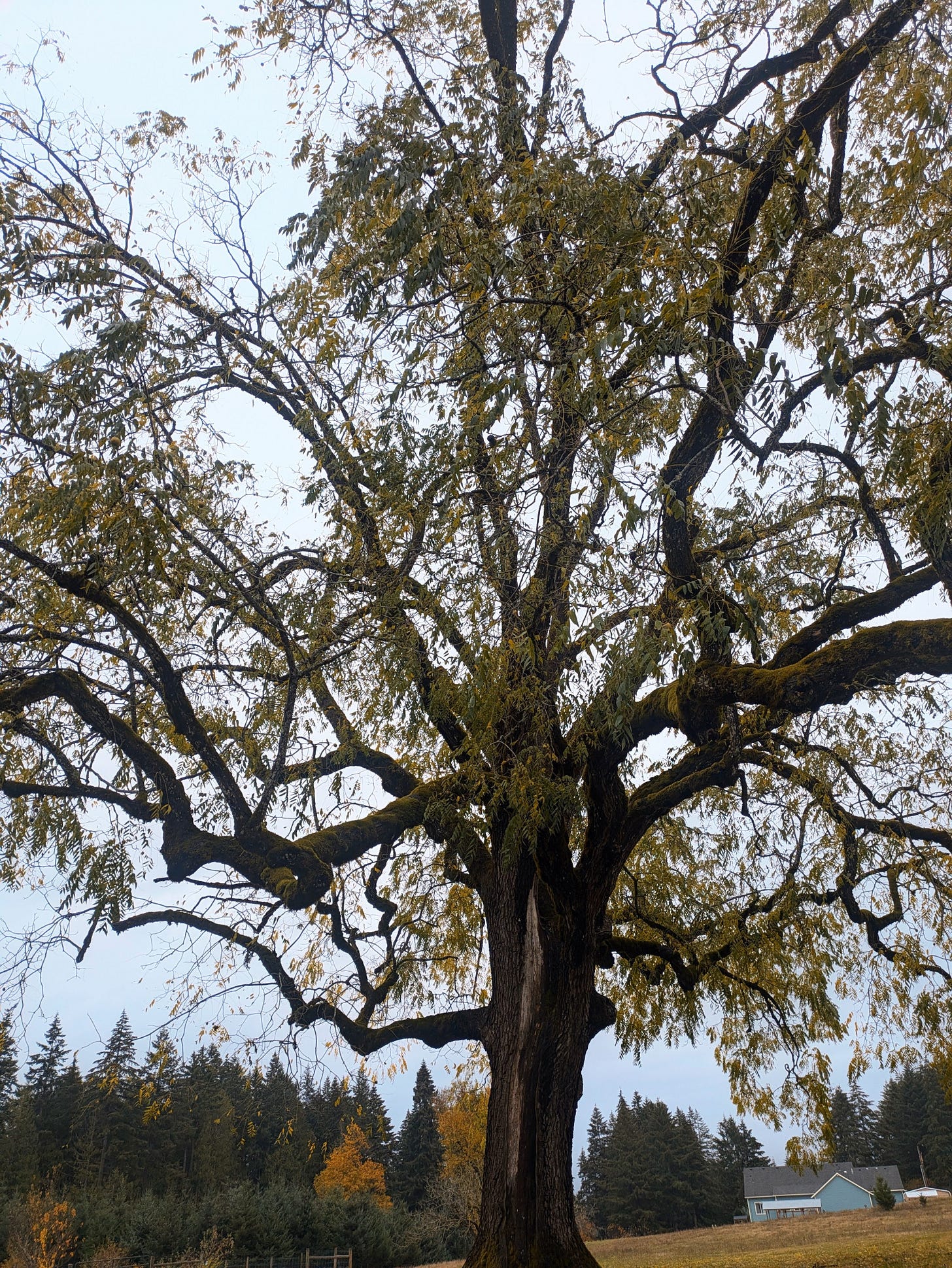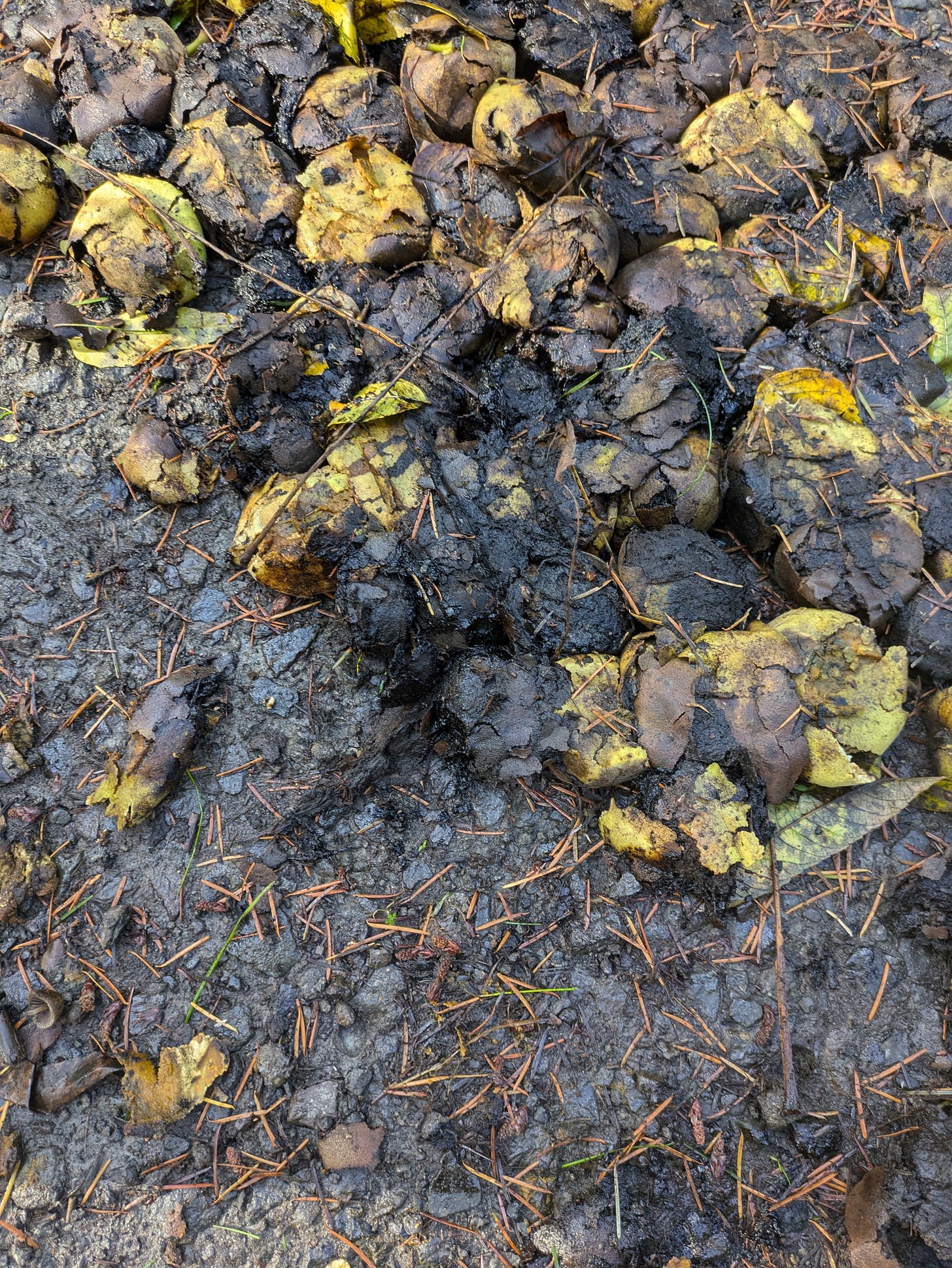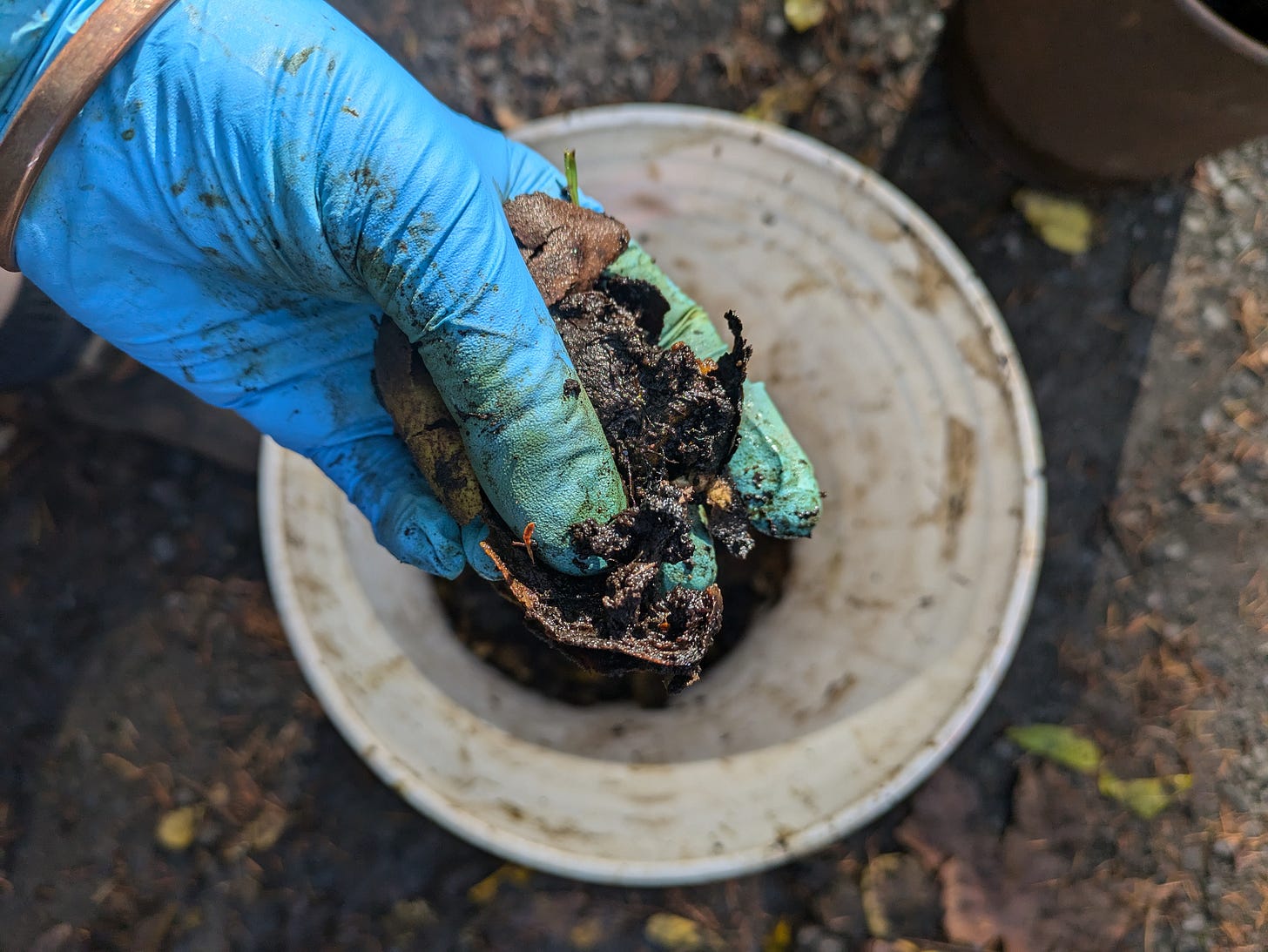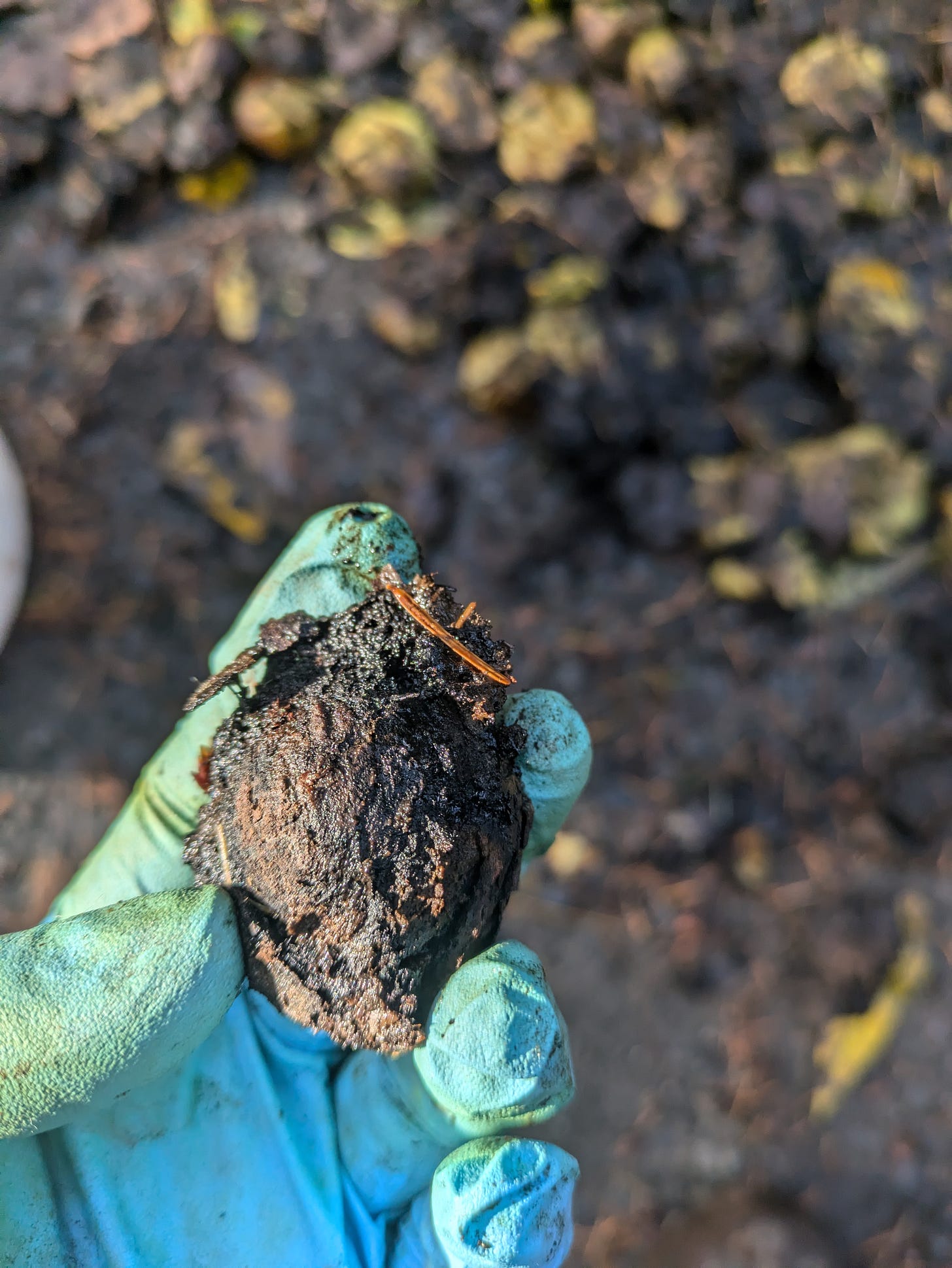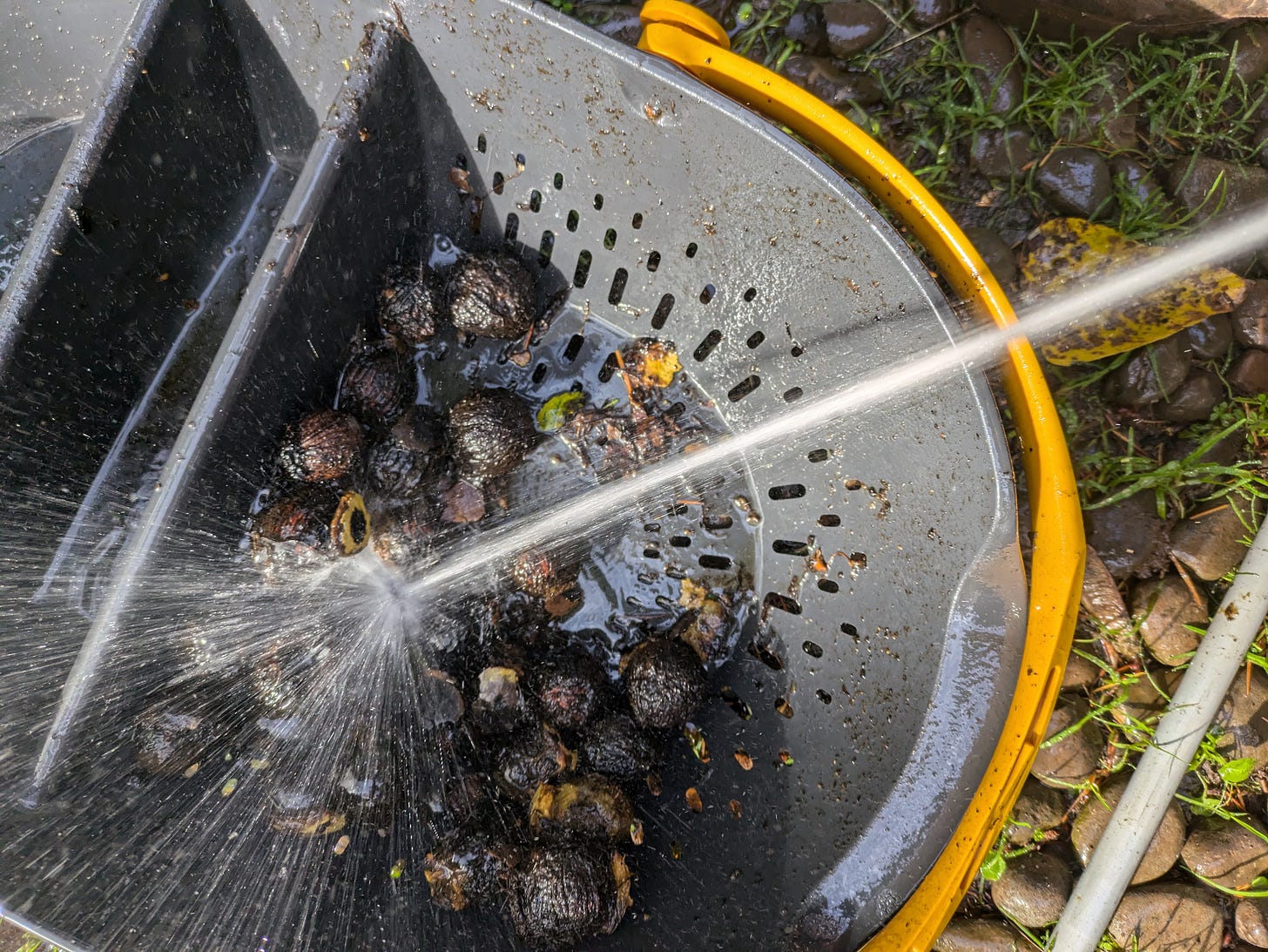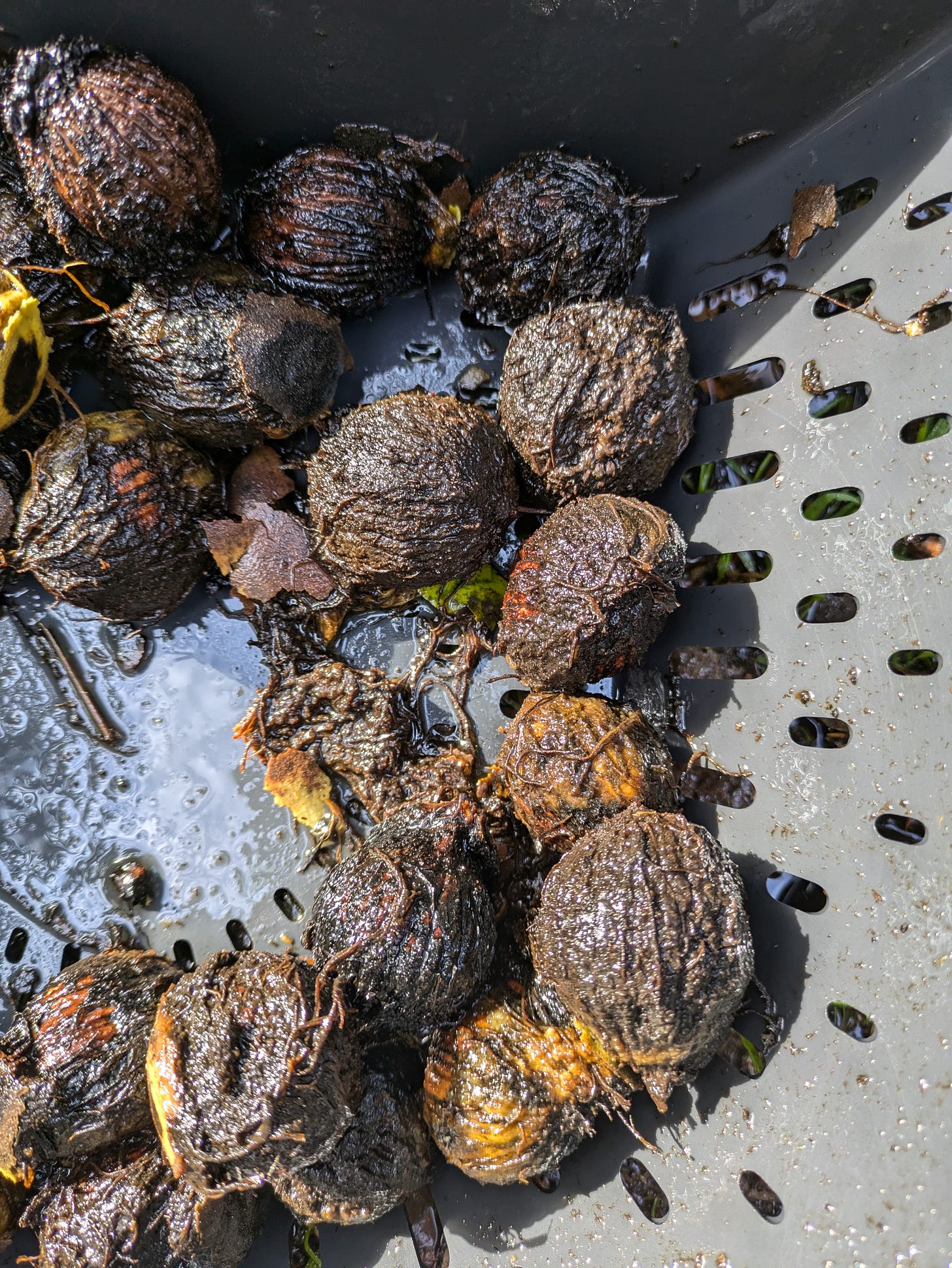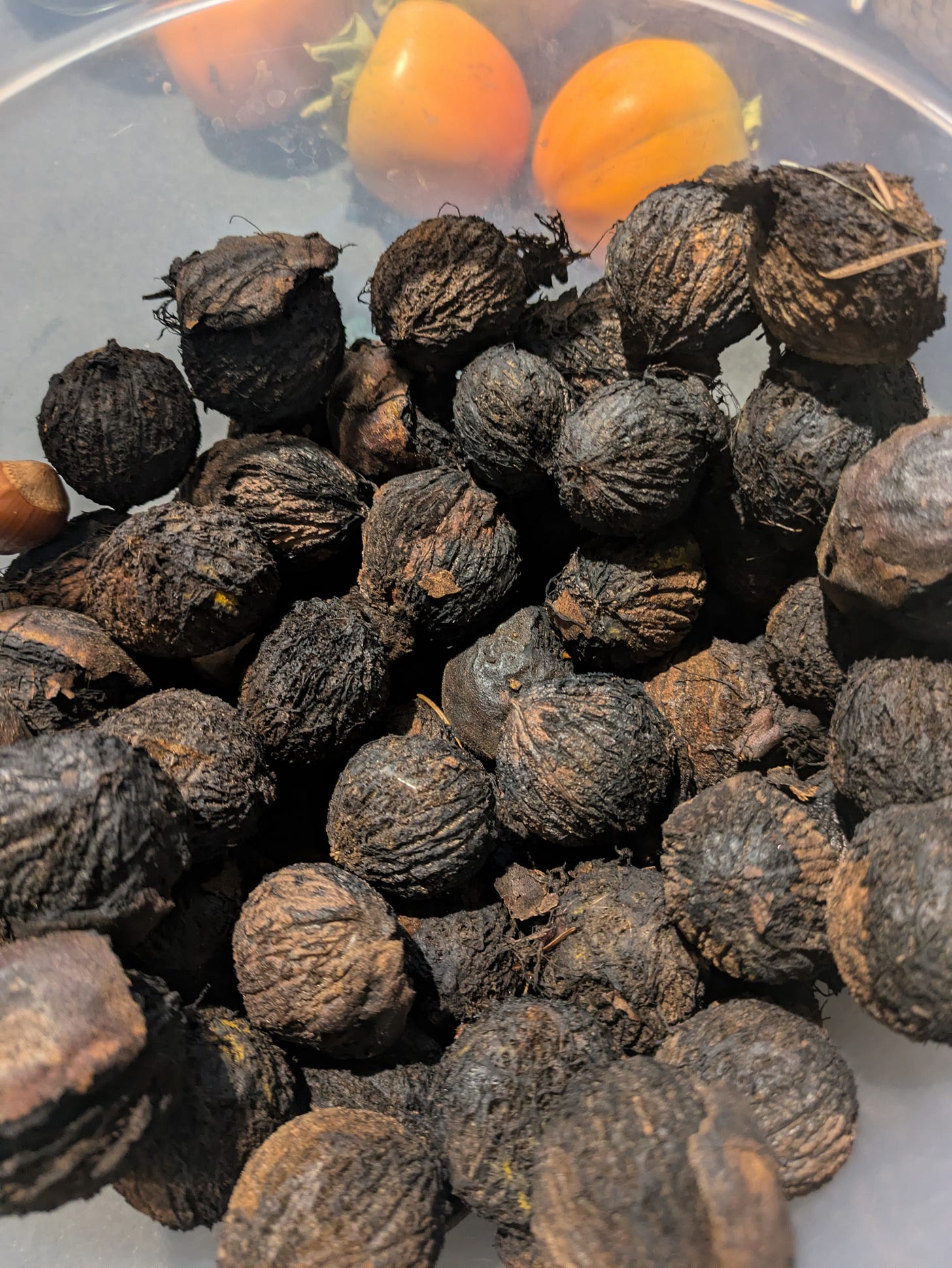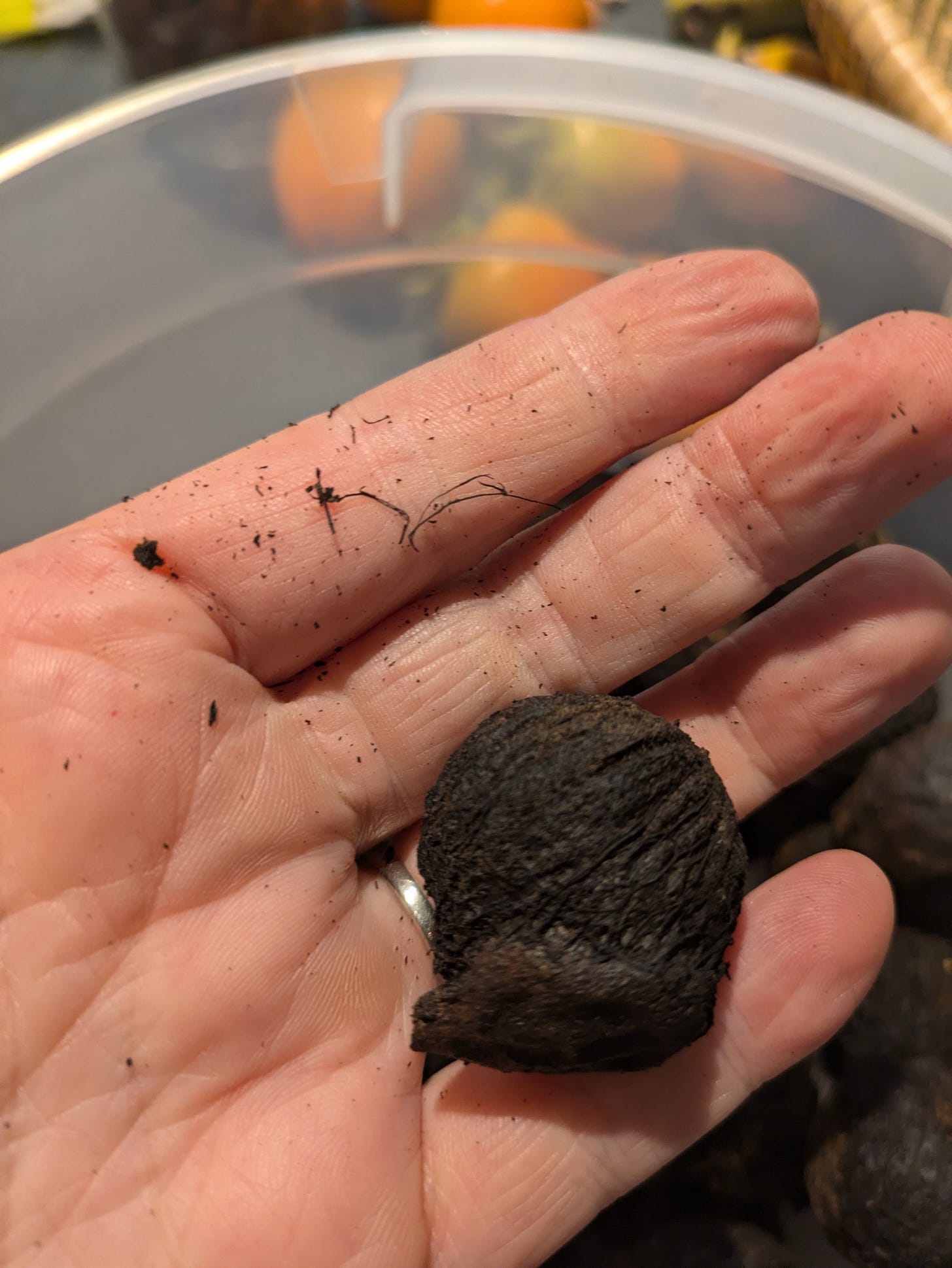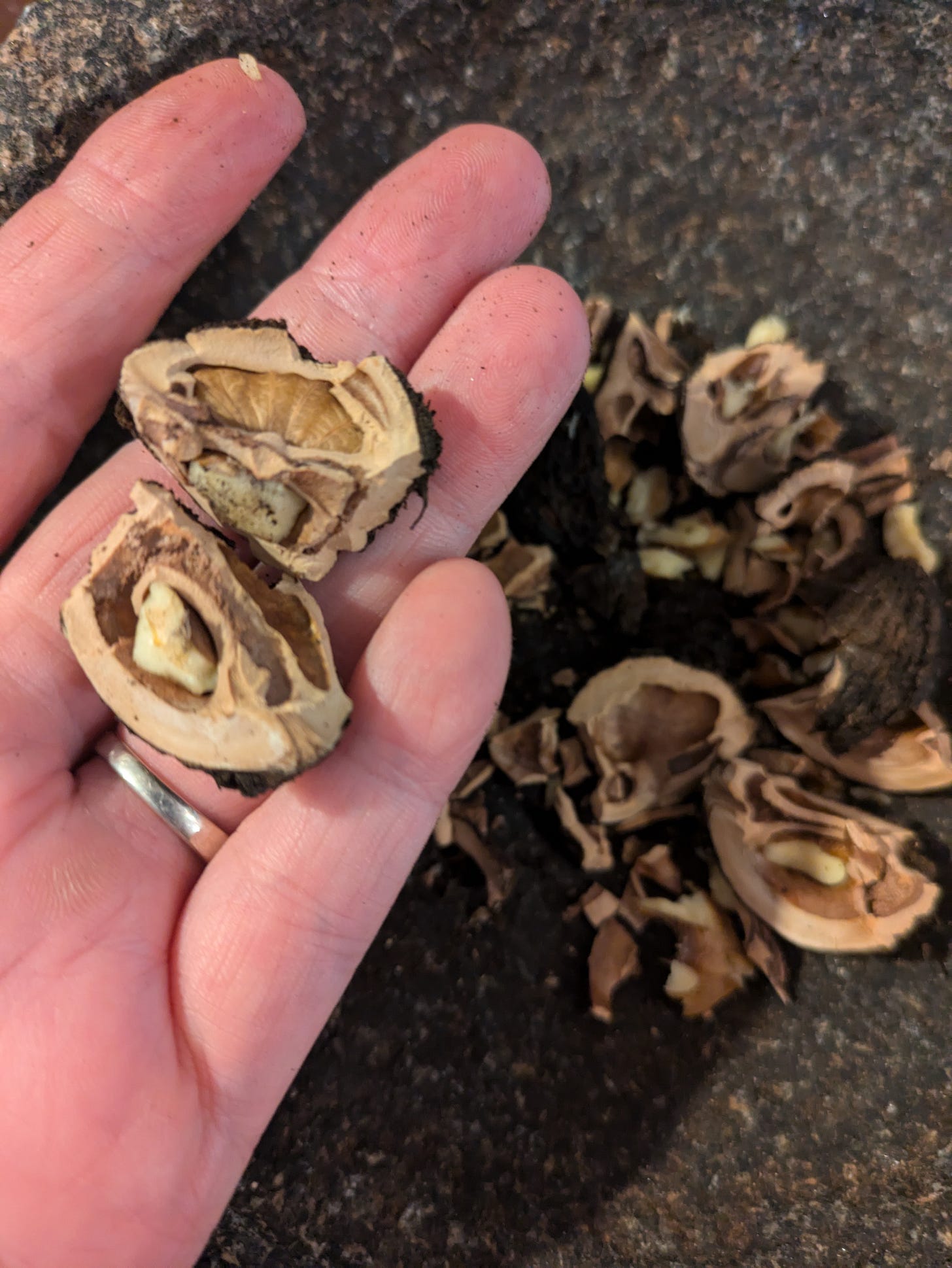Experimenting with Harvesting & Cleaning Black Walnuts
If I were to ever plant walnuts, it would probably be an English variety. Here's why.
I had a chance recently to pick up some black walnuts from a neighbor. I was excited to try them out, as I’ve been toying with the idea of planting more nuts on my property.
Collecting them is simple enough, you simply pick them off the ground. I filled most of a 5 gallon bucket and brought them home.
Then the real work begins. Black walnuts are encased in a green outer coating, and in-between the coating and the nut, there is a pith, which rapidly turns into black mush if not picked up from the ground immediately. In googling how to get the nut separated from the muck, the internet informs me that many people drive over the nuts to get the pith to separate
I learned quickly that working with these requires waterproof gloves, otherwise the mess will quickly start staining the hands.
I was disappointed to learn that once the nuts are separated, they are still covered in black muck. I learned that many folks fire up the pressure washer to get most of the rest of the yuck off. I don’t have a pressure washer, but I do have a strong nozzle, so I gave that a shot.
To my disappointment, they didn’t clean up as much as I’d like.
The next step after washing them is drying. You could do the slow method by placing them out in the air on a trap, or try in a food dehydrator. I chose the food dehydrator. Though, the nuts didn’t fit in the trays all that well. After a day at 105 degrees, I took them out.
You can see that my cleaning method did not fully remove the outer yuck. These little black bits still end up in the walnuts after cracking.
As for cracking (I use a molcajete), they are definitely harder to crack than English walnuts (which are the type of nuts that are sold to consumers). The nuts are also smaller than English, and bits of the nuts are a bit hard to get out of all of the nooks and crannies.
The flavor is different than an English walnut for sure. There’s a bit of a fruity flavor, kind of like almond extract. I like the Black walnut a little better than English.
But overall, if I were to plant walnuts, I would likely opt for an English variety, which doesn’t have all that black muck that is so difficult to clean off. Overall they seem easier and cleaner to harvest with a bigger yield. Also, I’d be concerned that if all the nuts were not harvested, that volunteer walnuts saplings would pop up all over the place. That’s a problem I don’t want to have.
Side note: here is a helpful video of a gentleman showing the difference in harvesting Black walnuts versus English walnuts.
I hope that if you’re considering planting a walnut that you’ll find this information helpful. And if you already have walnuts planted, please let me know your thoughts on the topic. I’m particularly curious to know if the walnuts clean better if harvested and hulled as soon as they drop.
Donations: the information that is provided here is free for gardeners of all financial means. If you’d like to financially support this site, you can make a one-time donation or monthly subscriptions on this link. All proceeds will fund more garden projects to share here with you, dear readers, thank you! And thank you SO much to the folks that have supported me. Your contributions mean so much.


